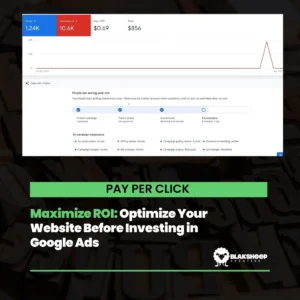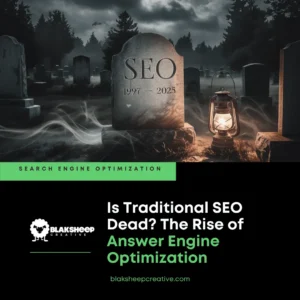SEO is often about more than just backlinks. It’s also about social shares, comments, and other metrics that show the power of your content. But there are some SEO best practices you can put in place to help your content get shared across the web more effectively.
We’ve compiled an ultimate guide to six types of articles that tend to get shared and linked online more than others, so you need to think about this before publishing your next blog post!
Here they Are:
Research and case studies
Research and case studies are the types of articles that often get shared and linked more than others.
This is because readers want to learn about what has already been done, how it’s helped people in the past, and whether it can help them in the future.
You may want to consider these types of articles when creating your next blog post because they’re engaging and relevant to your audience.
Content writers also like to share research and case studies because they make them look credible. They usually link back to the writer’s source in their article.
Image Source: https://blog.hubspot.com/marketing/link-building-stats
It’s been proven that long-form content is more likely to get shared online, but this doesn’t mean that all content should be long. According to Hubspot, articles in the 3000-10000 range tend to earn the most backlinks.
Even though shorter articles (like tips and listicles) aren’t as likely to get shared, you can still make them successful by adding something unique like an unusual perspective or a new stat.
How to write a case study :
Here’s how you can turn your ideas into a quality case study that will generate backlinks
- Think about a trendy topic – This could be anything from the Top 51 Dental Marketing Tools to Grow Your Practice or the Top 100 Plumbing Websites for Inspiration.
- Do some keyword research – find out who is talking about it – Use Google alerts, Twitter searches, and other sources to keep up with what’s going on in your niche.
- Use your keyword research – Think about other keywords and phrases people in your niche might be using.
- Analyze a lot of data about it – Remember, people like to link to original research and case studies because they help them look credible.
- Focus on your solution – How can you fix the problem? This will be the meat of your article.
- Make an outline – What’s the story? How can you tell it in a way that will engage and excite people to share it online?
- Create a plan for promotion – How will you let people know about it?
- Introduce your company if it’s relevant – Your case study should paint a picture of how your product or service solved the problem, so be sure to mention it when you’re doing your promotion.
People love learning about what’s trending and what others are doing, especially in their own industry. If you can provide case studies that demonstrate how other people in your niche have managed to solve a specific problem, then you’re more likely to generate a lot of SEO backlinks.
Do you need help researching and writing your next case study? Check out our copywriting services to learn how we can help you.
Infographics
Infographics are another type of content that tends to get shared more than others across social media channels.
As you’ll see in the chart from Backlinko below, infographics are the third-most linked-to type of content.
Image Source: Backlinko
This is because they are shareable, quick, fun, and attractive. You can easily make an infographic with software like Adobe Illustrator or use free tools online like Canva or Picmaker.
How to create an infographic:
1. Find a relevant infographic to adapt and use as the basis for your guide. Remember, this is about creating an infographic, not presenting someone else’s work as your own.
2. Decide what type of guide you want to create, e.g., a step-by-step or a list article. Infographics can work well as step-by-step guides.
3. Make your infographic easy to follow using lots of visuals and bullet points where appropriate. People don’t want to read a novel to get all of the information quickly and easily.
3. Find images and icons that support your ideas and add them to the infographic. This is the part where you can really bring your infographic to life.
4. Now is the time to start writing your own content that uses the infographic as a base. You need to make sure your article is better than someone reading the original infographic because if it isn’t, why would people visit your page instead?
You should know that infographics are good for SEO because they attract all the backlinks. So if you want a lot of high-quality links to your website, consider adding an infographic to your next blog post.
Do you need help creating infographics that are guaranteed to get shared and linked back to? Visit our graphic design page to learn how we can help.
Opinion and analysis
Opinion and analysis articles can be another type of content shared more than others on social media channels. These articles are often shared because readers want to voice their opinion and contribute to the conversation in a meaningful way.
Opinion and analysis pieces can range from topic-related discussions to personal opinions.
How to craft your opinion and analysis article:
1. Start with a controversial topic or premise for your opinion and analysis article. You can’t please everyone, but you don’t want to be too safe either, as this will limit the number of people who share your opinion. Moreover, if you can make people laugh along the way, that’s even better.
2. Research and substantiate your opinion and analysis to support your ideas. You should try to leave no stone unturned when it comes to backing up your thoughts with data or other proof. The more you can back up what you’re saying, the stronger your article will be.
3. Start writing your own content based on your research and opinion. This is the easy part because you already have all the information to write a high-quality article.
4. Include content in your opinion and analysis piece that adds value for readers. Use images, graphs, charts, or other visuals to share information without wading through lots of text.
Let’s face it, people like to argue about almost everything online, so if you can become the “go-to” person for an opinion on a particular topic, your readership will grow.

Expert roundups
Expert roundups attract a lot of quality backlinks because they allow influencers and industry insiders to promote their expertise and share their knowledge.
These articles are usually published by content marketers who yield authority in an industry or topic area.
Influencers often participate in these articles because they get to promote themselves without doing the work. Just be sure that you add value to your expert roundup pieces so people will want to link back to them!
How to craft your expert roundup:
1. Choose a topic that you can cover in-depth and for which you have access to experts who want to share their insights. You’ll find that there’s always an opportunity to showcase your expertise and what makes you the best person to write about this topic.
2. Start with the research phase by reaching out to your experts. You need to get the ball rolling and send invitations to people who you want to participate in your expert roundup. If you don’t, they may not know about it, and you’ll lose out on some great outreach opportunities.
3. After the initial research phase, start writing your own content based on all of the information you’ve gathered. It’s important to build upon the research and insights of your experts so that your own content resonates with readers.
4. Include quotes or images from at least two different people in your expert roundup. People love to see influencers participating in these types of articles because it gives them a chance to promote themselves without doing the work.
Roundups are the perfect way to tap into influencers’ vanity and get them to share your content without too much effort from you.
How-to articles
These help readers accomplish tasks. If your goal is for people to share your blog post, then you should use how-to articles in it!
Plus, according to the chart below from Backlinko, they’re the fourth most shared content.
You’ve seen the following image earlier, but it bears repeating.
These are particularly useful for local businesses because they provide a resource for people who may have questions or need help.
Related Reading: How to Get Free Backlinks for Your Website from your GMB
How to craft your how-to article:
1. Choose a topic that you can cover in-depth and have knowledge and expertise. You’ll find that there’s always an opportunity to showcase your knowledge and what makes you the best person to write about this topic.
2. Study the topic and think about what you would like to tell other people who are interested in it. It’s helpful to write out bullet points of all your talking points; this will help you get organized before writing. Before you begin, make sure to do your keyword research; otherwise, no one will find your article!
3. In how-to articles, you should avoid using fluff and vague language as much as possible. You can use a bit of fluff to keep your reader entertained, but try to have actual information that is useful for them, which they will find helpful or interesting. Keeping your paragraphs brief and not going on tangents throughout the writing process will help you to avoid unnecessary writing.
4. Leave some time before publishing your how-to article, then come back and reread it for any missing pieces of information or corrections that need to be made. When you are finished with the first draft, check for grammar and spelling mistakes because these are big turn-offs for readers and may cause them not to read the entire article or share it on their social media.
5. Your final draft should be more than 650 words and include at least one internal link to another source relevant to your post for increased SEO value. If you can, have a few more links to other websites associated with your topic for even more value.
6. Publish the article and share it on your social media networks; make sure to use relevant hashtags.
How-to articles are among the most popular types of content on the internet. When you create a how-to article, readers can learn from your experience and benefit from your knowledge.
Pro-tip: For an added SEO boost, include how-to schema in your post and see your rankings skyrocket! If you need help doing it, just let us know!
Informational articles
These articles might not attract as many links like the ones mentioned before but still offer a lot of value to readers.
Informational blog posts should include keywords and phrases that your target audience is searching for. They should also be on-topic and relevant to whatever website or social media channel you post them.
Look at the backlinks generated by this informational article on the best electric cars of 2021 and 2022 – 8.45K!
Informative blog posts should only be about one topic and provide detailed information about it. By doing this, you’ll keep people reading and sharing your blog post for longer!
How to write an informational blog post
1. Make sure you’ve done your research; this will help you provide the best information to your blog post readers. It is vital to keep them interested in your topic and tell them things they will find helpful or interesting. Remember – quality over quantity!
2. Write a headline that will appeal to readers and make them want to click on your post and read more. You can use keywords and phrases that you think people will be typing in Google search – this is an essential factor in SEO backlinks.
3. Think about what would make someone want to tell their friends about your blog post. Always include plenty of information in your posts, but try to add a bit of commentary to make them more enjoyable to read.
4. Set a word limit that you think will be best for your topic, and then try writing the blog post under that amount. This will help you stay focused on what is important and cut out any unnecessary information or extra words from your article.
5. Check for spelling and grammar errors before you publish your informative blog post because these will put people off reading any further. No one wants to read a poorly written post, so it’s important to catch any mistakes before you share it!
6. Publish and promote your blog post and make sure to use relevant keywords and hashtags when sharing online to get the most out of your article.
Let’s face it; these types of articles are much easier to create than other types. If you can, try to think about what type of post would be most exciting or engaging for your audience and then focus on creating that instead.
Interviews and expert advice
Interview and expert advice articles should also be part of your next blog post.
Look at the number of backlinks the following post with Google’s Matt Cutts received – 1.42K!
These types of articles can provide a unique perspective to your readers. They’re great for grabbing people’s attention because they’re easy to read and understand!
Just make sure that you have the right person writing these types of pieces, or else they won’t attract any backlinks.
Related Reading: The AIDA Framework: How You Can Use It in Your Copywriting To Boost Your Conversion Rates
How to find an expert to interview
1. Ask people involved with your blog post’s topic if they want to be interviewed. For example, if you’re writing a how-to article on marketing and app development, then you could contact some of the most prominent players in those industries and ask them if they’d like to share their advice with your readers.
2. Look for people that are influencers in your topic or industry. You can find these types of people on social media, where they will share their expertise with the world. For example, if you are writing a finance article, do a Twitter search for finance-related keywords, and you’ll get some suggestions on who to contact.
3. Look for experts that have been interviewed before and see if they would like to do it again! Interviews are a great way to learn new information from the people who know best, so make sure you try to track down an expert in your industry or topic if you want your blog post to attract more backlinks.
4. Ask yourself – would I want to read this article? If the answer is no, then maybe it’s time to find a new expert or try a different subject for your blog post.
5. Make sure you explain how the interviewee has been involved with your topic and why they are experts before publishing your post.
6. An excellent idea for interviews is to get more than one person involved! Try speaking to a few people in your industry or topic, find out what you can from them all, and then compile all their information into one blog post or roundup article.
7. Always be respectful of the interviewee and never try to change what they have written, even if you disagree with something they have said!
Everyone loves a good expert advice article because it can provide valuable information in a short and easy-to-digest format. They’re also a very popular type of content online, so go ahead and try writing one today! You’ll be surprised at the number of backlinks you can get from a simple post like this.
Did you know that some backlinks can actually hurt your website’s ranking? Contact us today and let us do an audit of your backlinks. We’ll find potentially toxic backlinks and show you how to disavow them with Google.
Guest posts
Guest posts are also a great way to get more people interested in your blog, and they can be a lot of fun to write, so why not give them a try?
When you write for another blog, you need to be willing to work on some of the creative aspects with the writer, including a headline and a bio.
The site owner will usually include a link in your bio back to your website, so you can attract visitors from a new source, which is a great way to expand your audience and stand out online.
Look at the following graph from ahrefs and you’ll see.
Your guest post doesn’t have to be too long either – most people will include a couple of paragraphs about yourself or your business at the beginning of the article before going into the meat of what you want to share with their readers.
Do you need help getting your website in shape? Our professional web developers can help you with that. We’ll design your site so that you can get more guest posting opportunities and conversions. Increase your bottom line and backlink profile at the same time! Visit our web design services page to learn more.
How to get more guest blogging opportunities
1. Make sure your website is in good shape before you try and find guest blog posts to write for someone else’s site – a messy-looking website won’t attract any writers or bloggers to publish with you!
2. Don’t be afraid to contact bloggers yourself – tell them that you’re interested in writing for their site. They might be surprised that you’re willing to write for them, or they may have even been thinking about reaching out to you themselves!
3. Set up your writer’s bio before you start writing for someone else – this includes a short paragraph about yourself and some links back to your website.
4. Don’t be afraid to put the call out on social media to see if any bloggers or writers want to work with you! Maybe they can help promote your guest post, which will give you even more backlinks and traffic.
5. Make sure your website is ready to take on new visitors – with guest posting, you can expect a significant surge in the number of people visiting and hopefully reading and sharing your blog posts!
Guest blogging brings a lot of benefits if done right – most importantly, it will improve your online visibility, which will lead to more backlinks and traffic.
Want to guest post on our blog? Contact us with your best pitch!
Breaking news
Last but not least, you should know that breaking news articles are also a type of content that gets shared more and linked back to than others across social media.
At the time of writing this post, this news item was only a few hours old. But look at the 3.23K backlinks!
When you write these types of blog posts, it’s essential to be aware that you have to keep up with the latest trends in your industry because people will want to stay informed about them through your blog.
How to write a breaking news article
1. Write your blog post in a timely manner. If you want to write a blog post about the latest trends, you should be the one to publish it first! Don’t wait for another website to beat you to it because Google will show its own results before yours if they’re more relevant and updated.
2. Make sure your website is AMP-enabled if you want to write a breaking news article. Although Google News used only to show results from Accelerated Mobile Pages sites, they ended this practice with the page experience update. It’s still a good idea to enable AMP for your website, though, because it will help you rank better in the news carousel and provide a better user experience. (Searchmetrics has an article that goes into AMP pages and Google on their site.)
3. Make sure you have high-quality photos available for any breaking news stories you write, with the most recent ones at the top of your blog post.
4. Write a summary of the news story, including who or what is involved and why it matters to your field or industry. Try to include links to other sources where people can find out more if you don’t want to cover every aspect of a news story because people will want to know more about it.
5. Don’t just focus on big news stories, though – write breaking news articles about any topic that might interest your readers! For example, you could write a blog post that summarises the biggest celebrity scandals of the moment or even write one that explains all the weird and wonderful things happening on the internet.
6. Try to include an opinion or insight into your blog post if you want it to stand out from other news stories that are published simultaneously as yours – this will help you attract more attention and links!
7. Don’t plagiarise the news story. If you want to write a breaking news article. Instead, summarise it in your own words so that people who read your blog post can still get the information they need.
8. Try to include some insight into how this news will affect people in your target audience when you are finished writing your blog post – this will add another layer of value to your blog post and help you attract more backlinks!
9. Include a few internal links to your other blog posts if you want – this will show Google that the topic is an important one for your website and can help you rank better in search results, plus it helps your internal linking structure for added SEO benefits.
In today’s world, it’s crucial to stay up-to-date on the latest news in your industry because this can help you boost your online presence.
If you write a blog post about something that’s happening in your field, people will want to share it with their friends and followers – in fact, if you’re writing about breaking headlines in your industry, then it’s really easy for your blog post to get shared thousands of times.
Conclusion
It’s essential to have a strategy for what types of content you will publish on your blog to attract backlinks to your website.
Your backlink profile is thought to be one of Google’s primary ranking factors.
This will help you rank higher in search engine results pages (SERPs). If you would like more information on how to do this, contact us today or visit our SEO services page to learn more.
















































